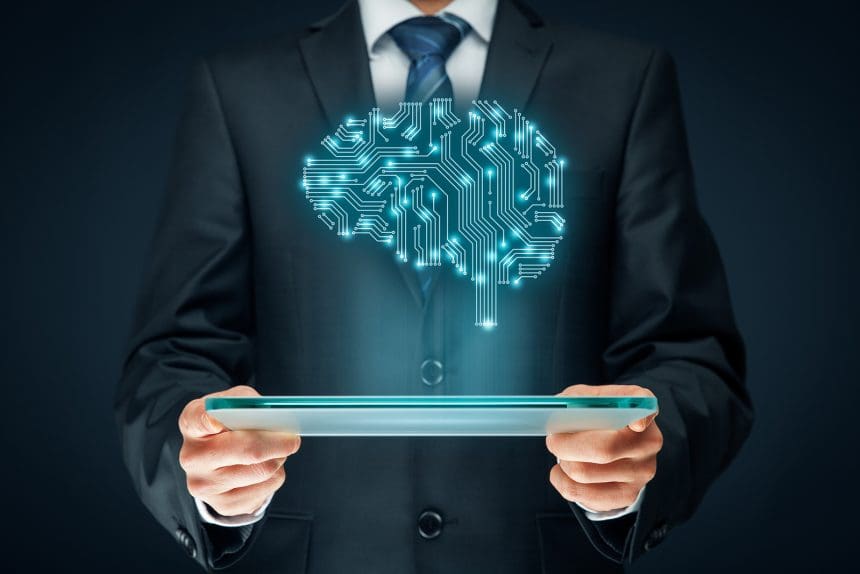Artificial Intelligence Explained: A Complete Guide for Everyday People
Introduction: What is Artificial Intelligence?
(STL.News) Artificial Intelligence, or AI, is a branch of computer science that focuses on building machines and software capable of performing tasks that typically require human intelligence. These tasks include understanding language, recognizing images, making decisions, learning from experience, and solving problems.
Think of AI as the ability for computers to “think” and “learn” in ways that mimic human reasoning—although not exactly the same as human thought. While AI doesn’t have emotions or consciousness, it can process massive amounts of information much faster than humans, identify patterns, and make predictions based on data.
From voice assistants like Siri and Alexa to recommendation systems like Netflix and YouTube, AI is already embedded in our daily lives—often without us even realizing it.
A Brief History of Artificial Intelligence (AI)
While AI feels like a new invention, the concept has been around for decades.
-
1950s – The Birth of the Idea
British mathematician Alan Turing asked, “Can machines think?” He developed the Turing Test to determine whether a machine could convincingly imitate human conversation.
Around this time, the term Artificial Intelligence was coined by John McCarthy in 1956 during the famous Dartmouth Conference. -
1960s–1980s – Early Experiments
AI researchers have created simple programs that can solve puzzles, play chess, and perform basic problem-solving tasks. However, computing power was limited, and progress was slow. -
1990s – AI Gets Smarter
IBM’s Deep Blue defeated world chess champion Garry Kasparov in 1997. This proved that AI could outperform humans in specialized tasks. -
2000s–Present – AI in Everyday Life
Faster computers, big data, and advances in machine learning have made AI mainstream. Today, AI powers self-driving cars, language translation apps, fraud detection systems, and even medical diagnoses.
The Main Types of Artificial Intelligence (AI)
AI can be categorized in several ways, but here are the most common classifications:
1. Narrow AI (Weak AI)
- Definition: AI that is designed for one specific task.
- Example: Google Search, facial recognition, or spam filters in your email.
- Key Point: Narrow AI is incredibly effective at its task but cannot perform any actions outside its programmed scope.
2. General AI (Strong AI)
- Definition: AI that can perform any intellectual task a human can do.
- Example: This type of AI doesn’t truly exist yet—it’s the kind we see in movies like Her or The Matrix.
- Key Point: Achieving General AI would mean creating machines with human-like understanding and adaptability.
3. Superintelligent AI
- Definition: AI that surpasses human intelligence in every aspect.
- Example: A hypothetical future AI capable of outthinking humans in science, art, decision-making, and emotional understanding.
- Key Point: Many experts debate whether this will happen and what ethical issues it could raise.
How Artificial Intelligence (AI) Works: The Basics
While the technology behind AI can get complex, the core concept is simple: AI learns patterns from data and uses those patterns to make decisions or predictions.
Key Components:
- Data – AI needs information to learn. The more data it has, the better it can perform.
- Algorithms – These are step-by-step instructions that tell the AI how to process data.
- Models – Once trained on data, the AI builds a “model” that can recognize patterns or predict outcomes.
- Training – AI systems “learn” by being fed data and adjusting until they produce accurate results.
- Feedback Loop – AI improves over time by comparing predictions with actual outcomes and adjusting accordingly.
Machine Learning vs. Artificial Intelligence (AI)
People often confuse Machine Learning (ML) with AI. Here’s the difference:
- AI is the broader concept of machines performing tasks that require intelligence.
- Machine Learning is a subset of AI where machines improve their performance by learning from data—without being explicitly programmed for every step.
Example:
If AI is like teaching a child everything step-by-step, machine learning is like giving them examples and letting them figure things out for themselves.
Deep Learning: The Power Behind Modern Artificial Intelligence (AI)
Deep Learning is a more advanced subset of machine learning. It uses neural networks—systems inspired by the human brain—to process data in layers, recognizing increasingly complex patterns.
Example:
When Facebook automatically tags your friends in photos, it’s using deep learning to recognize faces.
Typical Applications of Artificial Intelligence (AI) in Everyday Life
AI is already everywhere—often in ways you don’t notice.
- Voice Assistants – Alexa, Siri, and Google Assistant understand and respond to your voice commands.
- Recommendation Systems – Netflix suggests shows you might like based on your viewing history.
- Navigation Apps – Google Maps uses AI to suggest the fastest routes by analyzing traffic in real time.
- Fraud Detection – Banks use AI to spot suspicious transactions instantly.
- Healthcare – AI helps detect diseases from scans or predict health risks.
- Customer Service – Chatbots can answer questions 24/7.
- Social Media – AI curates your feed, detects harmful content, and recommends connections.
- E-commerce – Online stores use AI to suggest products you’re likely to buy.
The Benefits of Artificial Intelligence (AI)
1. Speed and Efficiency
AI can process data and perform calculations much faster than humans.
2. Cost Savings
Automation reduces the need for human labor in repetitive tasks.
3. Accuracy
AI can detect patterns and make predictions with high precision—sometimes more accurately than humans.
4. 24/7 Availability
AI systems don’t get tired, hungry, or distracted.
5. Scalability
AI can handle massive workloads that would require hundreds of humans.
The Challenges and Risks of Artificial Intelligence (AI)
1. Job Displacement
Automation can replace human workers in some industries.
2. Bias in AI
If the data used to train AI is biased, the AI will make biased decisions.
3. Privacy Concerns
AI often requires large amounts of personal data, which raises significant privacy concerns.
4. Security Risks
Hackers could exploit AI systems to cause harm.
5. Ethical Dilemmas
Should AI be used in warfare? Should it make life-and-death decisions?
Artificial Intelligence (AI) Myths and Misconceptions
-
Myth: AI will take over the world, as depicted in movies.
Fact: Current AI is specialized and lacks human-like consciousness. -
Myth: AI is always correct.
Fact: AI can make mistakes, especially if trained on flawed data. -
Myth: AI will replace all jobs.
Fact: AI will eliminate some jobs but also create new ones.
The Future of Artificial Intelligence (AI)
Experts believe AI will continue to grow in three main areas:
-
Automation of Complex Tasks – AI will move beyond repetitive work into areas like legal research or advanced medical diagnosis.
-
Better Human-AI Collaboration – AI will become a tool that works with people rather than replacing them entirely.
-
Ethical AI Development – Governments and companies will work on creating guidelines to ensure AI is used responsibly.
How to Prepare for an AI-Driven Future
- Learn New Skills – Focus on creativity, emotional intelligence, and critical thinking—skills AI can’t easily replicate.
- Understand AI Basics – You don’t need to be a programmer, but knowing how AI works will help you adapt.
- Stay Informed – Follow credible sources for AI news and updates.
SEO Tips: Why This Article Matters
For anyone searching for “What is Artificial Intelligence?”, “AI explained simply” or “How AI works”: This guide offers a beginner-friendly explanation. It’s written in plain English, optimized for clarity, and designed for both casual readers and those who want a deeper understanding.
Conclusion
Artificial Intelligence is not science fiction—it’s a powerful tool shaping our present and future. From making online shopping easier to helping doctors save lives, AI has the potential to improve nearly every part of society.
However, it also raises important questions about ethics, jobs, and privacy. Understanding AI in simple terms allows us to approach it with both excitement and caution. The more we know, the better we can utilize AI to benefit humanity—without losing sight of the values that define us as human.





